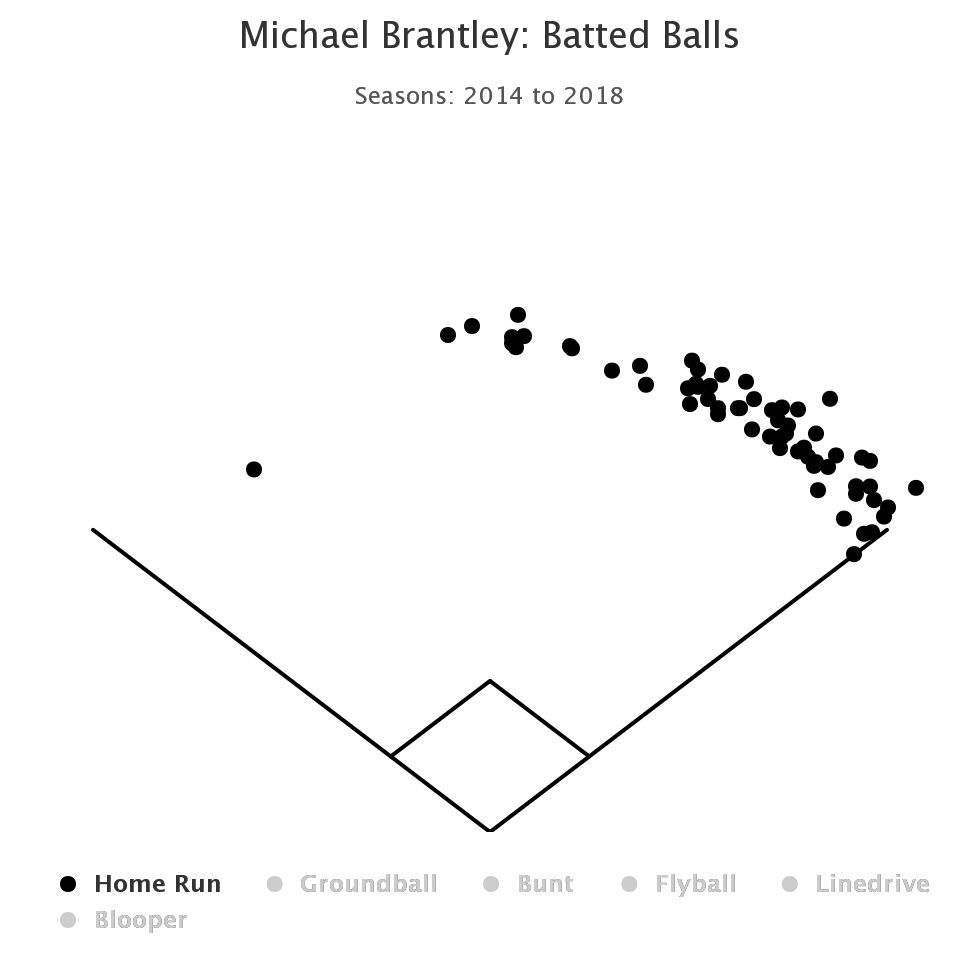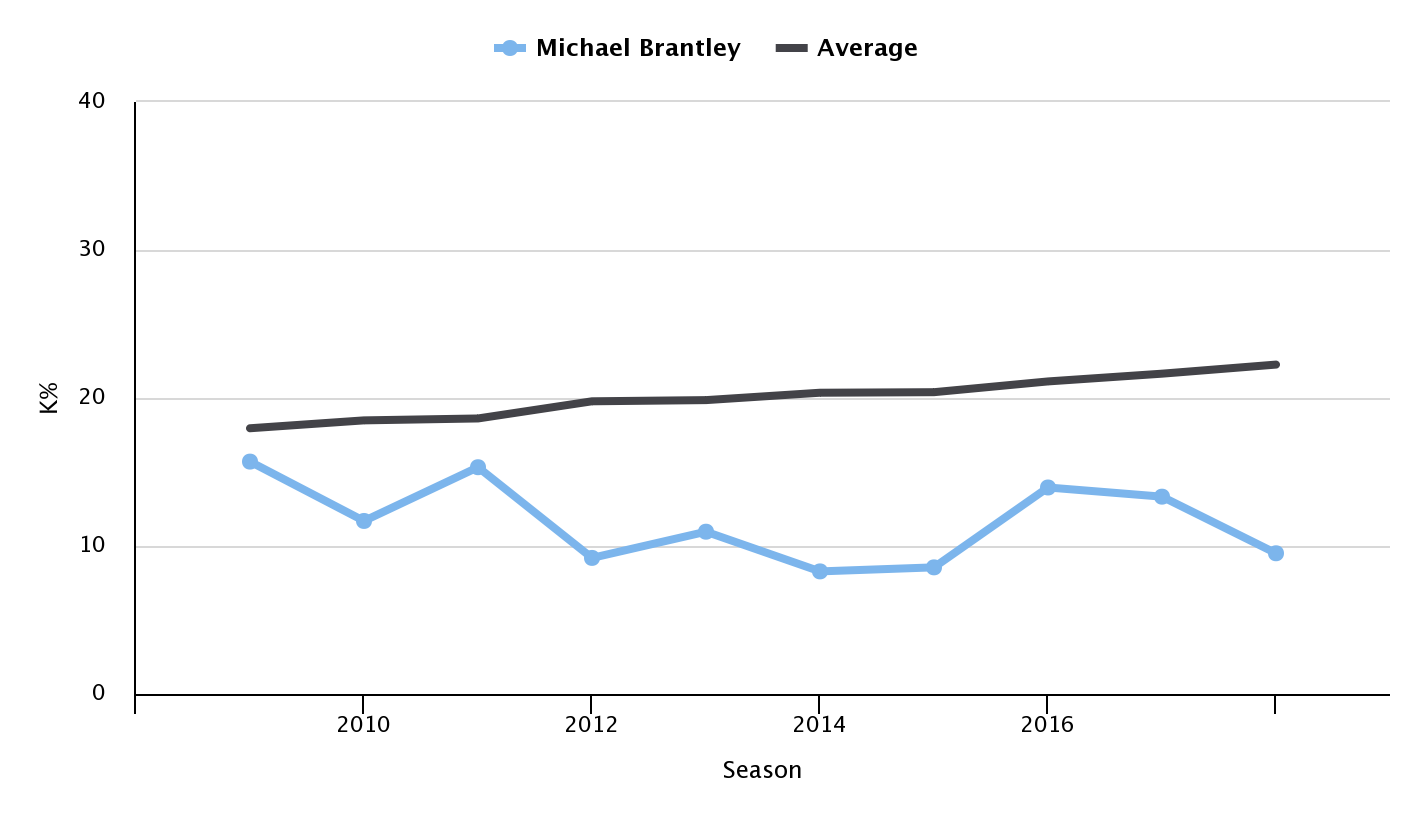Repeating as World Series champions is hard to do, which the Astros discovered last year after running into an untimely injury to 2B Jose Altuve, and a 108-win freight train in the form of the Red Sox, who rolled to a five-game victory in the ALCS against the defending champs.
Regardless of who the Astros added in the offseason, they were going to be considered the massive favorite to win the AL West again, and compete for the pennant. Their chances of getting back to the Fall Classic just got better with the signing of OF Michael Brantley, and it didn’t come at a hefty price.
Brantley, the former Cleveland Indians outfielder who enjoyed a brilliant comeback season after multiple surgeries derailed his 2016 and 2017 campaigns, inked a two-year, $32 million deal with the Astros on Monday night, as Houston added a quality bat to an outfield anchored by George Springer. The Houston infield is already loaded, and now their outfield has improved considerably, without needing to break the bank. Sure, previous ankle and shoulder surgeries can be a cause for concern regarding Brantley and his durability, but if last season was any indication, Brantley has put that behind him.
After recording just 418 combined plate appearances in 2015 and 2016, Brantley returned to health and logged 631 plate appearances last year. For a player that hadn’t endured a full season in three years, one might be concerned about a potential decline in the second half, but Brantley held up just fine in the later stages of 2018. There was a slight dropoff, but not nearly enough to raise any red flags. As you can see, his offensive numbers mainly stayed the course across the board.
Michael Brantley 2018
| Stat | First half | Second half |
| BB% | 6.7% | 8.9% |
| wOBA | .362 | .354 |
| wRC+ | 126 | 121 |
Perhaps even more encouraging when weighing Brantley’s durability were his final two months of the regular season, where he posted a 142 and 140 wRC+, respectively. Based on wOBA, August and September were Brantley’s best monthly marks of the season, save for his monster May, where he posted a .414 wOBA. Brantley’s quick start to the season helped earn him a second-straight All-Star selection, and he didn’t slow down the rest of the way.
Brantley’s surgically repaired shoulder didn’t seem to sap him of any power, as his 17 home runs were the second-most of his career, behind only his 20 in 2014, when he finished third in the MVP voting. In fact, Brantley’s average exit velocity against all pitches in 2018 was his highest dating back to 2015 (when Brantley posted a 133 wRC+ and StatCast began tracking exit velocity). Here’s his average exit velocity over the past four seasons, while excluding 2016, as he only appeared in 11 games:
Brantley, average exit velocity (mph)
| Year | EV, fastball | EV, breaking ball | EV, offspeed |
| 2015 | 89.6 | 86.5 | 86.7 |
| 2017 | 89.6 | 85.6 | 86.8 |
| 2018 | 90.5 | 88.7 | 88.7 |
No, these numbers don’t jump off the page, but Brantley has never been a big-time power hitter, but the fact that he maintained (and even slightly improved upon) the power he already had after missing all that time should be a good sign for the Astros. In fact, looking at xStats, which uses StatCast data like launch angle and exit velocity to give a more objective view of a player’s number’s, Brantley’s wOBA comes in at .370 for last season, as well as a slash line of .324/.378/.485. Based on Brantley’s quality of contact, his numbers in 2018 could have been even better, and he could see more favorable results in 2019. As for the change in scenery, Minute Maid Park in Houston (326 to right field pole, 373 to right center) is almost identical in terms of its right field dimensions as Progressive Field in Cleveland (325 to right field pole, 375 to right center), so Brantley’s pull-happy power swing shouldn’t lose many homers to ballpark factors.

Courtesy of FanGraphs
Of course, the Astros didn’t sign Brantley for his power; that’s an added bonus should he continue to hit homers on par with his previous career-highs. Brantley helps the Astros just by standing in the lefty batter’s box, which gets a little lonely in terms of the Houston lineup, which is loaded with righties like Springer, Altuve, SS Carlos Correa and 3B Alex Bregman. Brantley’s lefty bat can give the lineup a sense of balance, but that too is another added bonus. The Astros chose Brantley because of his ability to make contact at an elite level, in an era where strikeouts are through the roof. Per Baseball Savant, Brantley’s 11 percent whiff rate last year was the third-lowest in all of baseball, and for a team that finished with the second-lowest whiff percentage in the league last year, their newest addition could help them finish first in that category in 2019. This has been Brantley’s niche for years, and he just happened to get even better at it in 2018. Take a look at his strikeout percentage over the years, compared to the league average. As the rest of the league strikes out more often, Brantley travels in the opposite direction:

Courtesy of FanGraphs
According to Spotrac projections, Brantley’s market value based on his production was in the $19.2 million annual range, so $16 million a year could turn out to be a bargain. Sure, Brantley will be the Astros’ second-highest paid player, but that’s also due to a young core like Correa, Bregman and SP Gerrit Cole, who are all still arbitration eligible. Should Brantley maintain his health and his 2018 level of production, including on the defensive side, he’ll be a better fit than the other outfield alternatives that the Astros were seeking. Some rumors suggested they were looking at Detroit Tigers OF Nicholas Castellanos, who despite his 130 wRC+ last year, finished with a UZR of -12.9 last year, which would have made for an adventure in the Astros’ outfield. Now, with a much better fielding outfielder who can still hit, the Astros are set up for another deep run. With outfield help in the form of top prospect Kyle Tucker and Josh Reddick, Brantley could get scattered rest should he need it. Turns out, he didn’t need much of it last year, and his numbers didn’t suffer in the slightest. The Astros would love an encore of 2018.
(Photo by Frank Jansky/Icon Sportswire)

This move makes sense – everyone can use professional hitters. I wonder what the long-term picture looks like. I don’t see where Kyle Tucker fits. Maybe best on another team for some other pieces to help win now? They also have Yordan Alvarez in the mix in AAA. They are going to have to trade something I think or they are just going to have a bunch of bat first specs losing value by the day. They have traded away a lot of OF bats in recent years, like Teoscar and some lesser known names – it does seem to be something that they like to do.